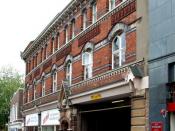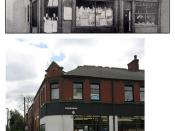Urbanization is the increase in the percentage of the population residing in cities. Presently, forty-five percent of the world's population is urban. This figure represents industrial and traditional society. Urban areas make up one third of traditional society, and three fourths of industrial society. These two types of societies vary in many different ways. Two of which are growth rate, and the decline of the nucleus of the city.
In traditional societies urbanization grows very unevenly. That's because usually one city grows very large and the rest of the country remains very rural. An example of this is, Thailand. In Bangkok, the city is fifty times larger than the second largest city. But still eighty percent of the population in Thailand is still rural. Growth rate in traditional society is largely due to migrants. Migrants come to the city even though the employment is very scarce, and housing is extremely hard to find, simply because the city is far better a place than where they came from.
These people are generally called "squatters". They take over run down buildings without government permission. When a city reaches about twenty percent of the country's population, almost everyone has a relative that resides in the city. This can aid a migrant when they come. Their relatives can give them a place to stay for a short while, give them leads on what businesses are looking to hire, and other tips on surviving in the big city. With the huge umber of migrants, it overwhelms the big city, therefore, cannot afford to support everyone at a comfortable living standard. When this happens the city usually takes what it needs from the rural areas causing an increase in rural poverty. Thus creating a cycle of migrants moving to the city to better their lives.


